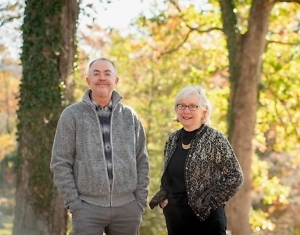Inspired by Nature
A new biography illuminates the life of photographer George Masa
George Masa: A Life Reimagined is an apt title for the new biography by Janet McCue and Paul Bonesteel. Its subject, a Japanese photographer whose work was vital to the creation of the Great Smoky Mountains National Park, created a “barrier … between his present and his past” when he arrived in Asheville, North Carolina, in 1915, and much of his life’s work has been lost. However, thanks to new research, McCue and Bonesteel have composed an engaging account of the man described as “the Ansel Adams of the Smokies.”

A 1929 profile of Masa in the Asheville Citizen declared that he was “an artist at heart, and – like the true artist – wants to express by means of his art, this feeling of worship which contemplation of Nature has inspired in him.” After a humble start as a laundry room employee at Asheville’s elegant Grove Park Inn, Masa taught himself photography and became the inn’s official photographer. He later opened a series of studios in Asheville. Although he could have had a lucrative career solely as a portrait photographer — he did the wedding portrait for Edith Vanderbilt’s daughter — he developed a passion for exploring and photographing the surrounding mountains. “Nobody would have the patience that he had to wait for a cloud,” said an acquaintance. Masa’s aesthetic sense was matched by his “uncanny” technical skills, which enabled him to “overcome the difficulties of haze and cloudy weather which often balk an amateur photographer in the Smokies.”
These skills impressed Horace Kephart, leader of the campaign to create a national park in the Great Smoky Mountains in the late 1920s. Kephart invited Masa to join forces with him, and soon Masa’s stunning images were appearing in Kephart’s publicity materials and in missives to philanthropists and politicians. A tireless hiker, Masa also made maps and measurements that helped define the path of the Appalachian Trail through North Carolina and Georgia. Despite his early death from tuberculosis at the age of 48, Masa left a considerable legacy which has been honored in the naming of both a mountain peak (Masa Knob) and a species of lichen (Lecanora masana, or Masa’s Dots).
 Authors McCue and Bonesteel abide by the assertion of renowned biographer James Atlas that “the biographer’s purpose is to show what ‘other factors — beside genius’ contribute to the making of an artistic life.” Thus, they devote more space than is perhaps necessary to the historical events that touched Masa’s life, including the 1918 influenza epidemic and the 1929 stock market crash. However, their account of federal anti-Asian legislation and the growth of the KKK in western North Carolina makes Masa’s achievements seem all the more remarkable: He was dogged by racially motivated suspicions and false accusations even as he “identified himself with the life of [the] region.”
Authors McCue and Bonesteel abide by the assertion of renowned biographer James Atlas that “the biographer’s purpose is to show what ‘other factors — beside genius’ contribute to the making of an artistic life.” Thus, they devote more space than is perhaps necessary to the historical events that touched Masa’s life, including the 1918 influenza epidemic and the 1929 stock market crash. However, their account of federal anti-Asian legislation and the growth of the KKK in western North Carolina makes Masa’s achievements seem all the more remarkable: He was dogged by racially motivated suspicions and false accusations even as he “identified himself with the life of [the] region.”
Masa shared little about his early life with his friends in Asheville, and the authors leave the veil of mystery in place until the final chapters of the book. Using new scans and translations of his letters, as well as facial recognition software, they compose the story of Masa’s lonely childhood, his immigration from Japan to the West Coast, and the fall from grace that sent him fleeing eastward under a new name. By withholding this information until the end, McCue and Bonesteel encourage the reader to see the person who reimagined himself in Asheville as the real George Masa, a man remembered for his artistry, perseverance, and invaluable contributions to the mountains he loved.

Whitney Bryant is a writer, teacher, and editor. Her work has appeared in The Georgia Review and One Story. A graduate of Vermont College of Fine Arts, she lives in Nashville.


